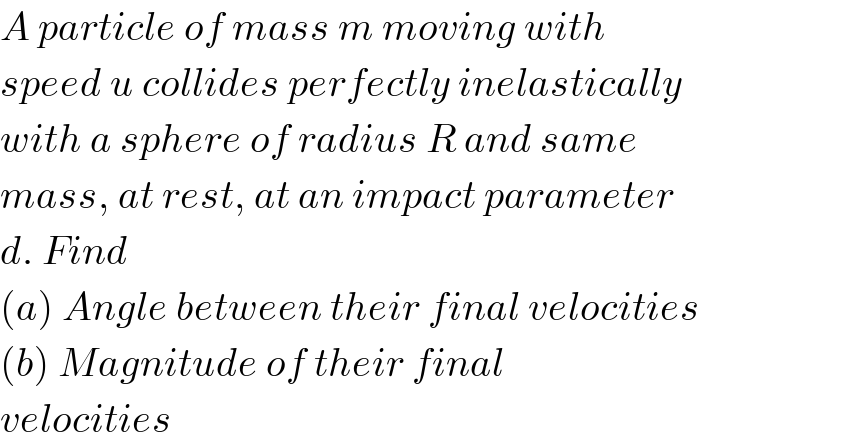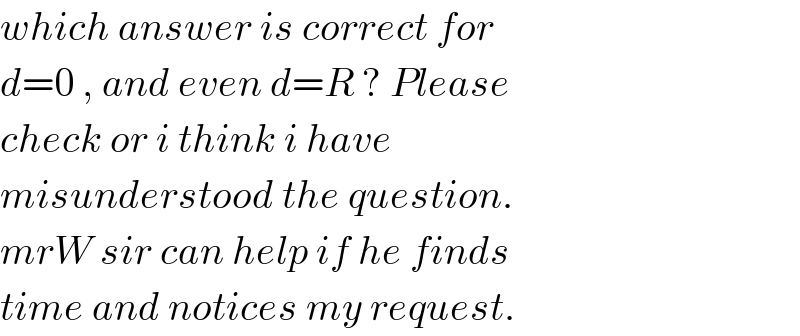
Question and Answers Forum
Question Number 25091 by Tinkutara last updated on 03/Dec/17

Answered by ajfour last updated on 03/Dec/17

Commented by ajfour last updated on 04/Dec/17
![conserving linear momentum mu=2mv+mωRsin θ and sin θ=d/R , so 2v+ωd=u ...(i) conserving angular momentum about ground point G: mu(R+d)=mvR+(2/5)mR^2 ω+ m(v+ωRsin θ)(R+d)+mω(Rcos θ)^2 ....(ii) and as (Rcos θ)^2 =(R+d)(R−d), also Rsin θ=d ⇒ u(R+d)=vR+(2/5)ωR^2 + (v+ωd)(R+d)+ω(R^2 −d^2 ) from (i): v+ωd=u−v , so vd=ω((7/5)R^2 −d^2 ) and from (i): 2v+𝛚d=u ⇒ 2ω((7/5)R^2 −d^2 )+ωd^2 =ud ω=((ud)/((((14)/5)R^2 +d^2 ))) ; v=((u((7/5)R^2 −d^2 ))/((((14)/5)R^2 +d^2 ))) tan φ=((ωRcos θ)/(v+ωd)) =(d(√(R^2 −d^2 ))/((vd/ω)+d^2 )) tan 𝛗=((5d(√(R^2 −d^2 )))/(7R^2 )) . V=((ωRcos θ)/(sin φ)) =ω[((√(R^2 −d^2 ))/(sin φ))] .](Q25097.png)
Commented by ajfour last updated on 03/Dec/17

Commented by Tinkutara last updated on 05/Dec/17

Commented by ajfour last updated on 05/Dec/17

